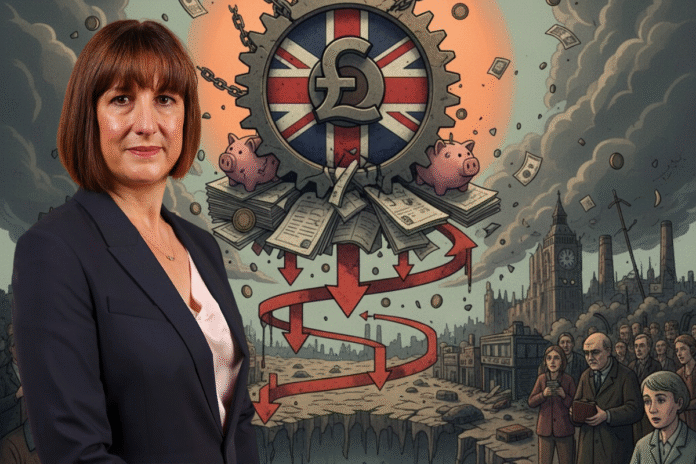The Chancellor must use this month’s Autumn Budget to build a minimum £30 billion fiscal buffer and set public debt on a “clearly declining path” to restore market credibility and avoid a “fiscal doom-loop”, the National Institute of Economic and Social Research (NIESR) has warned.
In its latest quarterly Economic Outlook, the independent think tank said years of economic shocks had left the UK’s public finances stretched and borrowing costs at their highest in the G7.
It estimates an underlying fiscal gap of around £38 billion – larger than the figure expected from the Office for Budget Responsibility (OBR) later this month – but said both figures highlight the same fundamental challenge: the urgent need to rebuild fiscal headroom.
SAFETY NET
NIESR argues that the Chancellor should target a safety margin of at least £30 billion, equivalent to about 1% of GDP, beyond any shortfall identified by the OBR.
This, it said, would give the government “genuine insurance against future shocks” and help lower borrowing costs by reassuring markets of fiscal discipline.
Such stability could, in turn, spur business investment and consumer confidence, creating the “virtuous feedback loop” the economy badly needs.
CENTRAL ISSUE
The institute warned that the sustainability of public debt is now the “central issue” for the UK economy.
With real interest rates exceeding the rate of economic growth, stabilising debt requires persistent primary budget surpluses of around 1% of GDP – and larger surpluses to bring debt down.
Without decisive fiscal tightening, it said, debt dynamics risk acting as a ratchet: “each new shock lifts the ratio higher, and without determined consolidation, it never falls back.”
RATES ON HOLD
NIESR now forecasts GDP growth of 1.5% in 2025, slightly above its estimated long-term trend of 1.25%, before easing back to trend in 2026 and 2027.
Inflation is expected to fall to 2.7% by mid-2026 and reach the 2% target by the third quarter of next year.
The think tank expects the Bank of England to hold rates steady this week before cutting by 25 basis points in February 2026 and again later in the year, bringing the base rate to 3.5% – its estimate of the natural nominal interest rate.
Given this backdrop, NIESR urged the Chancellor to “put the public finances back on a sustainable track by ensuring debt begins to fall as a share of GDP” and to “create a large buffer against her fiscal rules to reduce uncertainty and borrowing costs.”
It also cautioned against slashing productive public investment or overcomplicating the tax system with small, piecemeal changes that raise little revenue.
OPPORTUNITY KNOCKS

Stephen Millard, NIESR’s Deputy Director for Macroeconomics, said: “The forthcoming Budget presents the Chancellor the opportunity to turn things around and take brave choices.
“She will likely need to break her manifesto pledge by raising income tax – rather than attempting to fill the gap by messing around with lots of changes to marginal taxes – as this would be the least bad option for the economy.”
And he added: “A mixture of tax rises and spending cuts is needed to put the UK economy and public finances ‘back on track’, which would in turn help the Government to focus on its mission to deliver higher economic growth and better living standards across the country.”
UNSUSTAINABLE PATH

David Aikman, NIESR’s Director, said: “The trajectory of UK public debt is becoming unsustainable.
“Five years on from the pandemic, this is the moment to reverse that drift and start bringing debt down. Without a credible plan to reduce debt over this Parliament, the UK risks locking in a permanently higher – and potentially unstable – debt ratio.
“That will reduce the Government’s ability to cushion future shocks, control inflation, and invest in long-term growth.
“The economics are clear; what is required now is political will – the readiness to take difficult decisions on tax and spending in this Budget in the long-term interests of the UK economy.”





